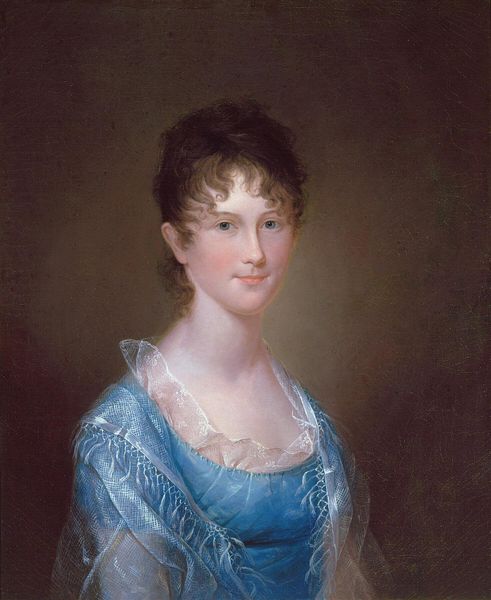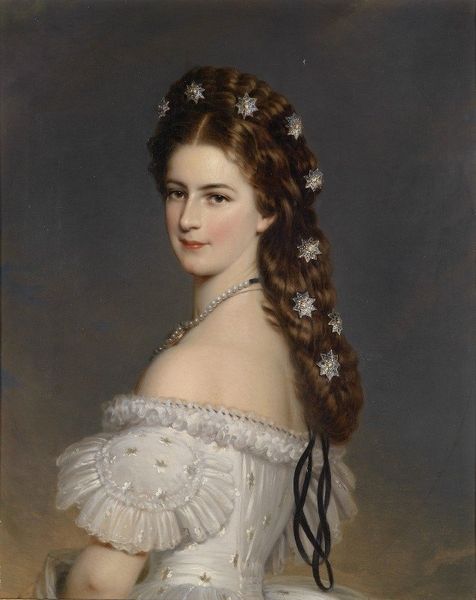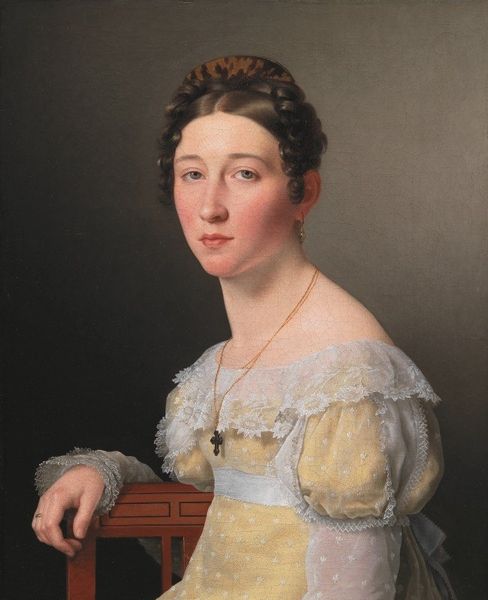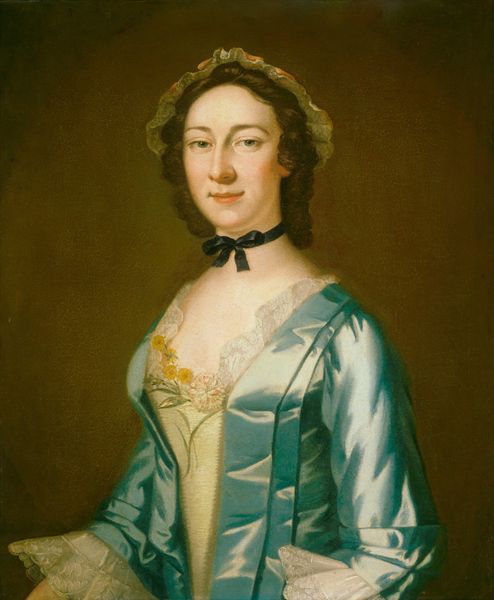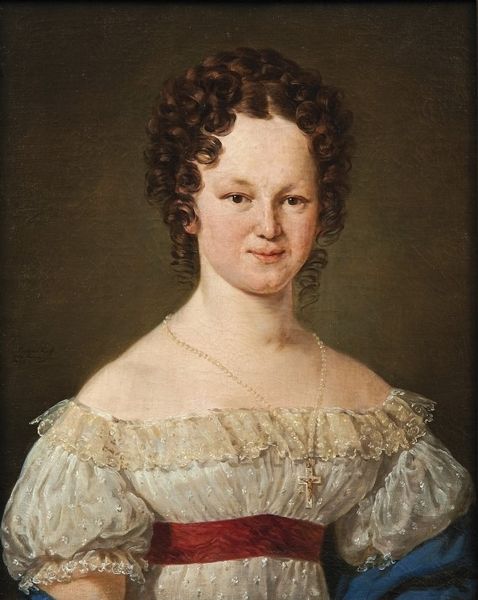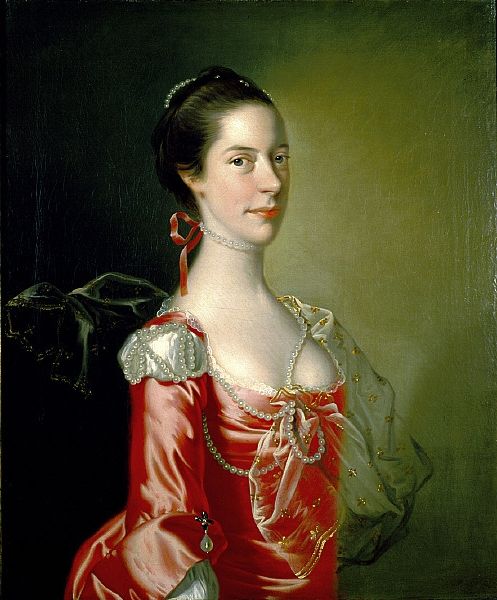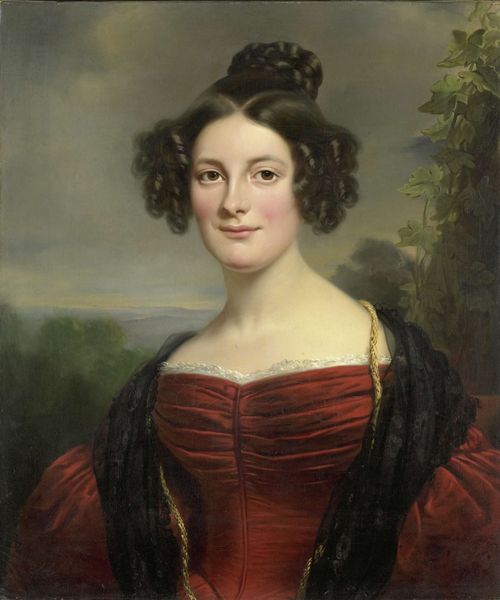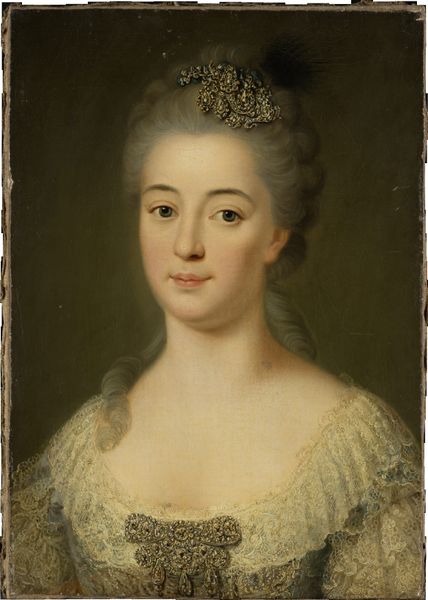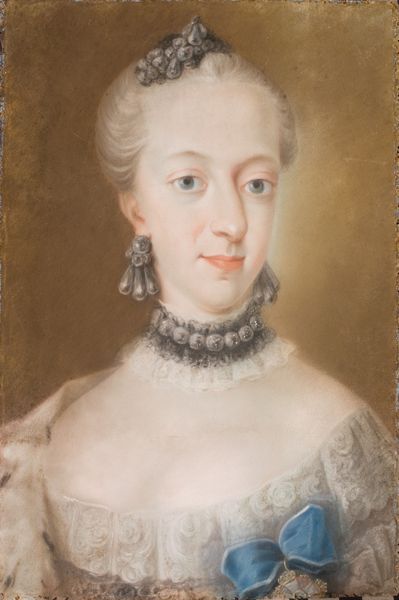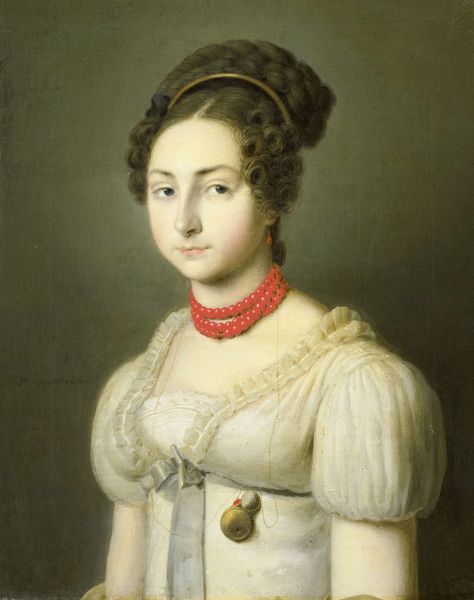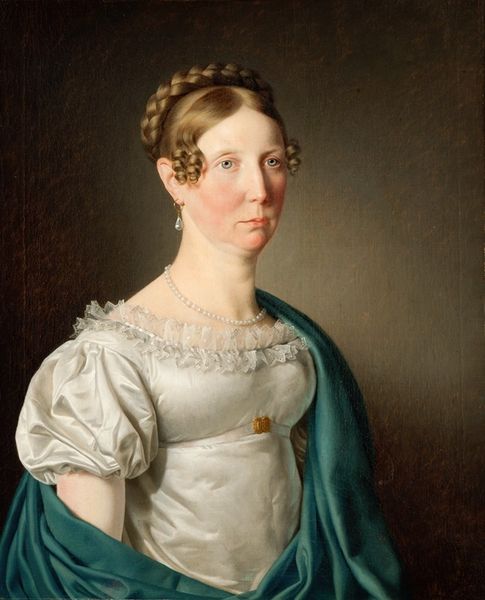
Elizabeth Gunning, Duchess of Hamilton (later Duchess of Argyll) 1752
0:00
0:00
painting, oil-paint
#
portrait
#
painting
#
oil-paint
#
rococo
Copyright: Public domain
Editor: Here we have Gavin Hamilton's portrait of Elizabeth Gunning, Duchess of Hamilton, painted in 1752 with oil on canvas. She appears serene, almost regal, yet there's also a sense of vulnerability in her expression. What story does this painting tell from your perspective? Curator: This portrait exists within a very specific social and cultural context. Elizabeth Gunning was famous for her beauty. Her image became a commodity, endlessly reproduced and circulated. This painting isn't simply about capturing her likeness; it's about reinforcing her status as a desirable and powerful figure within 18th-century British society. How do you think the Rococo style, with its emphasis on elegance and ornamentation, contributes to that? Editor: It definitely elevates her. The lace and the blue satin dress project luxury. But does it also, perhaps, conceal more complex realities of her life? Curator: Absolutely. Portraits like this were carefully constructed performances. They project an idealized image, obscuring any potential imperfections or complexities. Consider the institutions that shaped this image: the artist's studio, the patron's desires, and the ever-watchful public eye. Who was Elizabeth Gunning performing for, and what expectations was she trying to meet? Editor: So it's not just a picture, but a product of its time and the pressures women faced. It makes you wonder what she truly felt behind that composed expression. Curator: Precisely. And by examining the painting through that lens, we can better understand not just the artwork itself, but the social forces at play in 18th-century Britain. Editor: That's a richer perspective than I initially considered. Thanks for clarifying how social and historical context influenced the artwork.
Comments
No comments
Be the first to comment and join the conversation on the ultimate creative platform.

